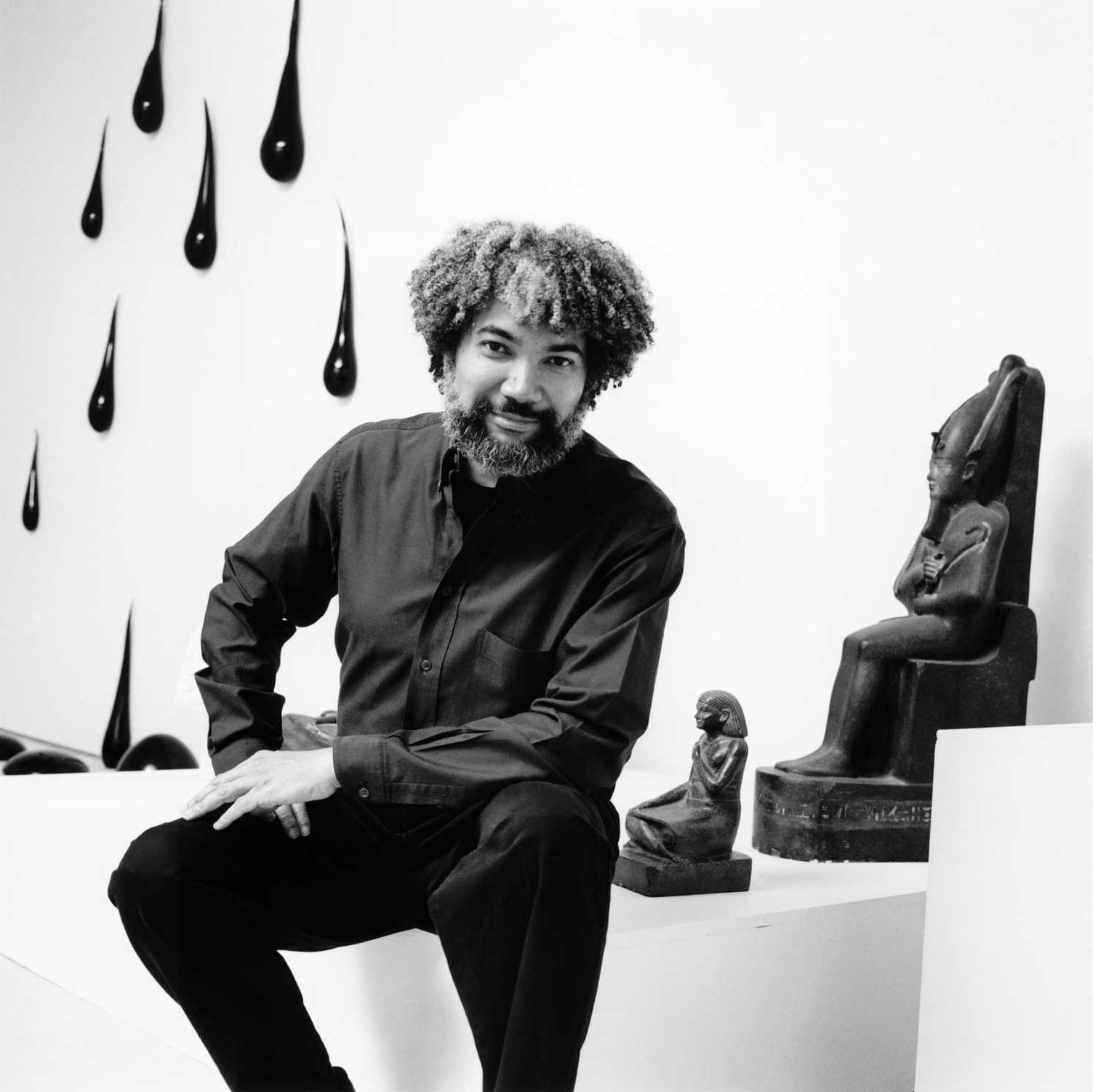
Fred Wilson
Fred Wilson was born in the Bronx in 1954. He received a BFA from Purchase College, State University of New York. Commenting on his unorthodox artistic practice, Wilson has said that, although he studied art, he no longer has a strong desire to make things with his hands: “I get everything that satisfies my soul from bringing together objects that are in the world, manipulating them, working with spatial arrangements, and having things presented in the way I want to see them.” Thus, he creates new exhibition contexts for the display of art and artifacts found in museum collections—including wall labels, sound, lighting, and nontraditional pairings of objects.
Wilson is renowned for his interdisciplinary practice that challenges assumptions of history, culture, race, and conventions of display. By reframing objects and cultural symbols, he alters traditional interpretations, encouraging viewers to reconsider social and historical narratives.
His early work was directed at marginalized histories, exploring how models of categorization, collecting, and display exemplify fraught ideologies and power relations inscribed into the fabric of institutions. His groundbreaking and historically significant exhibition Mining the Museum (1992) at the Maryland Historical Society radically altered the landscape of museum exhibition narratives. As interventions, or “mining,” of the museum’s archive, Wilson re-presented its materials to make visible hidden structures built into the museum system—and to American Society as a whole.
At the onset of the twenty-first century, Wilson began to place more focus on his object-based work. In collaboration with the prominent American glass blower Dante Marioni, he began producing his first glass artworks in 2001—ambiguous black-colored forms that assert a multifaceted political undercurrent. “The color black represents African American people because it’s been placed on us as a representation,” Wilson says. “Of course, the color black—the absence of light—really has nothing to do with African Americans. But there’s a whole other layer of meaning.”